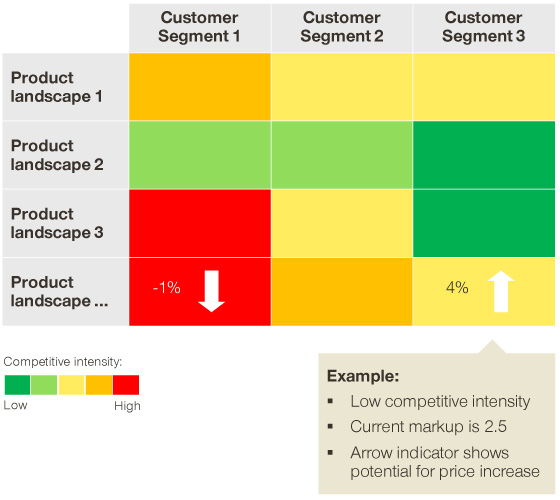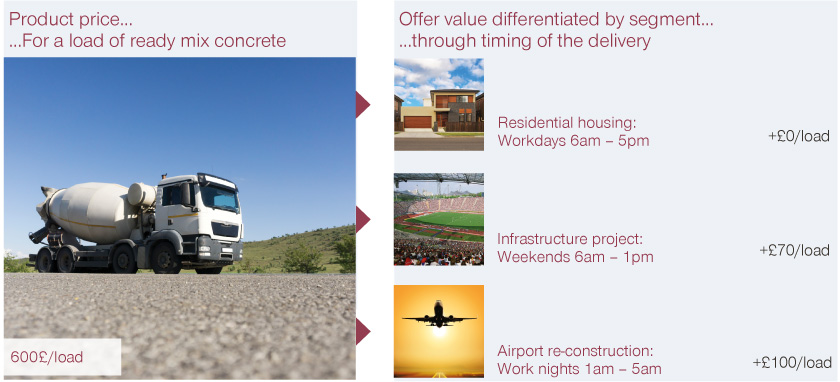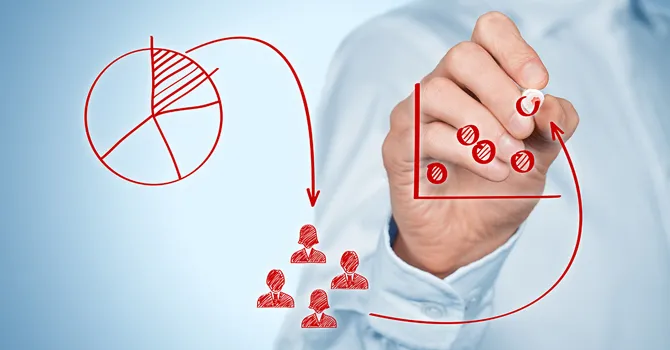Even in stable market conditions, price differentiation has proven to be an effective tool for monetizing value. With inflation on the rise, a differential pricing strategy is now more important than ever. Here’s how companies can develop different offers that appeal to their specific target customer segments – and put the right price tags on them, too!
Pricing is a practice that stands out from the crowd. Unlike many business processes, where organizations often seek to “iron out” differentiation, in price setting variation is something to be embraced. The inconsistencies and differing attributes between customers, products, and services allow companies to tap into a wide range of willingness to pay. And as the number one profit driver, price is a topic that definitely deserves closer attention.
Many companies we work with are surprised to hear that their consistent margins are in fact an indicator of suboptimal pricing – usually due to a cost-plus or one-size-fits-all strategy. Within a short discussion, we are able to show how price differentiation would enable the company to better tap into their true revenue potential and generate a significant increase in volume and profit.
What is differential pricing?
Differential pricing is achieved by developing different prices and offerings to cater to different customer segments, or based on varying situational factors, such as timing, demand, and the competition. Its principles are founded in the recognition that specific groups of customers have different needs, price preferences, and product requirements. Companies can adapt their price levels and product/service features to accommodate the needs of their different customers and then communicate the benefits through a targeted value-selling approach.
Segmenting customers by behaviors, needs, and profitability
Offering one product at one price does not tap into willingness to pay and leaves many customers out of reach. Instead, companies should segment customers based on their behavior/needs, product attributes, and the competitive situation, then provide a differentiated offering and prices.
Segmentation can also be used to reward customers through differential pricing based on their potential profit contribution. This can be particularly effective in a B2B environment whereby important customers pay a relatively low price and less important customers pay a higher price. Here it is essential that both the customers and the company’s sales force understand the segmentation criteria.
Segmentation and differentiation – what you need to know:
- Which customer should pay which price? Who should pay more? For what? Why?
- How differentiated is the product and service offer from the market perspective?
- How different are delivered (internal) and perceived (external) performance?
- How different are margin expectations according to product type, market position, and strategic intent?
To answer these questions, we recommend defining a competition map, which can be prepared in the following steps:
- Determine market attractiveness
Estimate size, growth, profitability, and competitive intensity for each space on the map (where is the most value?) - Evaluate competitive strengths
Conduct internal assessment of competitive performance and capabilities for each space on the map (where are you best suited to capture value?) - Map out targeted natural spaces
Align players with their likely future spaces on the map, based on their strategy, goals, and sustainable comparative advantages (where do you pick your battles?) - Align whole organization
Ensure that senior management, product management, and the sales force all act in concert.

When is it best to use differential pricing?
We often here from clients that “we’re a commodity business” and therefore differential pricing “won’t work for us”. Well, you can’t get much more commoditized than water. Think about the water that comes out of the tap, which in the UK costs on average 0.1 pence per liter. Meanwhile, a liter of bottled Buxton water costs approximately £0.50, a liter of Perrier approx. £1.55, and liter of Voss artesian water approx. £4.52.
So the truth is that there is always an opportunity to differentiate prices, it just requires strategic marketing and positioning applied effectively to create value.
Another common push back we hear from clients is that “we are a low involvement product” – meaning that their products or services are not exciting enough to differentiate.
Try telling that to this concrete supplier. They previously sold their ready mix of concrete for a one-size-fits-all price of £600 per load. By differentiating their offer by segment and by delivery time, they were able charge up to an additional £100 per load of concrete.

Interested in a more detailed discussion based on your individual pricing needs? Then reach out to discuss pricing strategies today!








